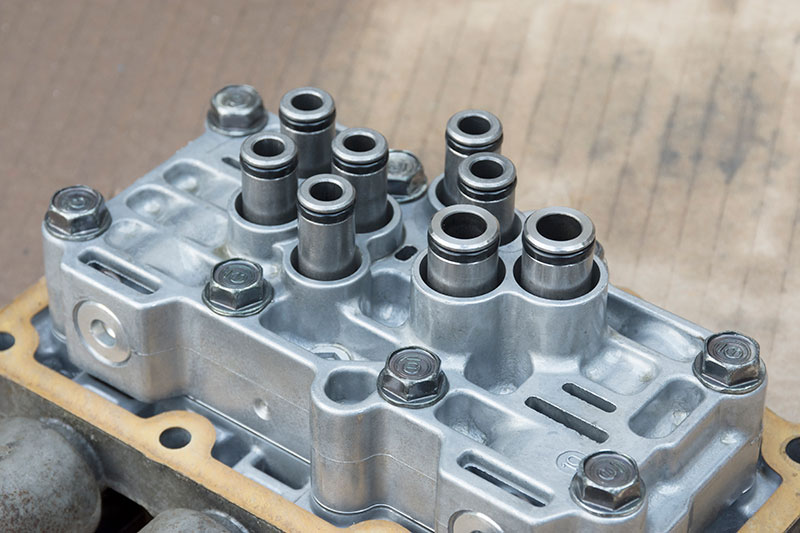
On average, your car is made up of about 30,000 parts - from the engine itself all the way down to the nuts, bolts, and bearings that keep everything together. And each of these parts works with the others to create the nice ride that you have.
One very necessary component is your transmission. Using a combination of sensors, gears, fluid, and hydraulics, your automobile is very easily able to drive at various speeds with smooth transitions. And much of this is thanks to the transmission solenoid within it.
A solenoid is a small part with a big role. Let’s take a closer look at what this transmission solenoid is - and how to tell when it is not performing well.
What is a Transmission Solenoid?
Simply put, a transmission solenoid controls the flow of fluid throughout a vehicle's transmission system. Often having two or more, these small valves open and close to allow fluid to flow into and throughout the transmission when it is electrically signaled to do so.
When running smoothly and allowing the flow of transmission fluids, solenoids will let the vehicle's speed accelerate and decelerate smoothly. However, when they aren’t as efficient in moving the fluid - or they stop altogether - problems can occur.
Being aware of any signs of potential issues with your transmission solenoid should prompt you to seek repairs before things get worse.
Signs of a Transmission Solenoid Problem
Transmission solenoids are designed to last - some even for the life of the vehicle, But, it is not at all uncommon for them to fail. This is especially true since there are multiple parts that make up the unit.
Below are a few signs that your transmission solenoid may be struggling:
- Delayed Shifting. Your car should automatically switch from gear to gear smoothly as your speed increases and decreases.
- Skipping Gears. If there are issues with certain gears, they may be skipped over. This could be due to a bad solenoid.
- Unable to Move Out of Gear. If your car is stuck in the same gear and will not shift, this is a big indicator of a bad solenoid.
- Check Engine Light. If the check engine light is illuminated on your dash, it is always a good idea to get your car checked as it could be your solenoid.
- Sluggishness. If your automobile suddenly seems to lose its ability or gumption to move when you want it to, it could be protecting itself from gear trouble due to a bad solenoid. This is often referred to as limp mode.
In general, having a bad solenoid will often impact how well (or poorly) a transmission shifts between gears. If you start to notice anything different as you hit the gas - you should have your car examined by a transmission specialist.
Can You Drive with a Bad Transmission Solenoid?
Continuing to drive an automobile that is showing signs of an ailing transmission solenoid can be dangerous and can lead to bigger issues down the road. For instance, it could cause you to drive in gears that do not match your speed. Doing so can also lead to an overheating - or transmission failure.
In other words, this is never a good idea.
Having Transmission Solenoid Trouble?
If you are experiencing signs of trouble with your transmission solenoid, then it is time to contact Circle D Transmission at (713) 895-7019. Or, schedule an appointment online.
We are here to diagnose an issue with your transmission, as well as offer preventative service to the residents in and around the Houston area.



